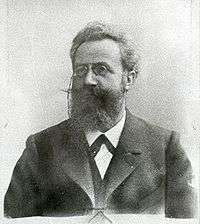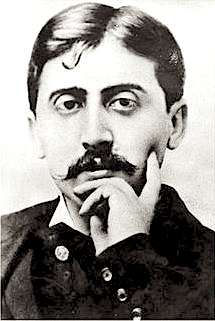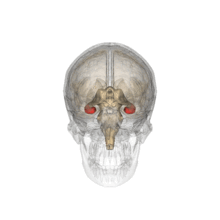Involuntary memory
Involuntary memory, also known as involuntary explicit memory, involuntary conscious memory, involuntary aware memory, and most commonly, involuntary autobiographical memory, is a subcomponent of memory that occurs when cues encountered in everyday life evoke recollections of the past without conscious effort. Voluntary memory, its binary opposite, is characterized by a deliberate effort to recall the past.

Occurrences
There appear to be at least three different contexts within which involuntary memory arises, as described by J.H. Mace in his book, Involuntary Memory.[1] These include those that occur in everyday life, those that occur during the processes of voluntary and involuntary recall, and those that occur as part of a psychiatric syndrome.
Precious fragments
These include involuntary memories as they arise in everyday mental functioning, comprising the most common occurrences. They are characterized by their element of surprise, as they appear to come into conscious awareness spontaneously. They are the products of common every-day experiences such as eating a piece of cake, bringing to mind a past experience evoked by the taste. The term "precious fragments" was coined by Marigold Linton, a pioneer in the study of autobiographical memory research.
By-products of other memories
These are less common, and appear to be the result of voluntary/involuntary retrieval. Characteristic of such occurrences is the triggering effect this has, as one involuntary memory leads to another and so on. Again, Linton describes her own experiences with such memories as "...coming unbidden sometimes when my mind is silent, but also as by-products of searches for other information."[1]
Not so precious fragments
Finally, some involuntary memories arise from traumatic experiences, and as such are fairly rare compared to other involuntary memories. Subjects describe them as salient, repetitive memories of traumatic events. The troubling nature of such memories makes these occurrences important to clinical researchers in their studies of psychiatric syndromes such as Post-traumatic Stress Disorder.
History
Hermann Ebbinghaus

Born in Bremen, Germany in 1850, Hermann Ebbinghaus is recognized as the first to apply the principles of experimental psychology to studying memory. He is especially well known for his introduction and application of nonsense syllables in studying memory. Nonsense syllables are combinations of letters that do not follow grammatical rules, and are meant to lack any meaning. Ebbinghaus designed the use of them to study his own memory by memorizing lists of nonsense syllables and testing his own recall after specified time intervals. From this he discovered the Forgetting curve and the Spacing effect, two of his most well-known contributions. Ebbinghaus was also the first to attempt a description of involuntary memory, stating that, ‘Often, even after years, mental states once present in consciousness return to it with apparent spontaneity and without any act of the will; that is, they are reproduced involuntarily. Here, also, in the majority of cases we at once recognize the returned mental state as one that has already been experienced; that is, we remember it. Under certain conditions, however, this accompanying consciousness is lacking, and we know only indirectly that the "now" must be identical with the "then"; yet we receive in this way a no less valid proof for its existence during the intervening time. As more exact observation teaches us, the occurrence of these involuntary reproductions is not an entirely random and accidental one. On the contrary they are brought about through the instrumentality of other immediately present mental images. Moreover, they occur in certain regular ways that, in general terms, are described under the so-called laws of association.[2]
Marcel Proust—Proustian memory

Marcel Proust was the first person to coin the term involuntary memory, in his novel À la Recherche du Temps Perdu (In Search of Lost Time or Remembrance of Things Past). Proust did not have any psychological background, and worked primarily as a writer. He was considered sickly as a child, and suffered from what was most likely borderline personality disorder.[3]
Proust viewed involuntary memory as containing the "essence of the past", claiming that it was lacking from voluntary memory. In his novel, he describes an incident where he was eating tea soaked cake, and a childhood memory of eating tea soaked cake with his aunt was "revealed" to him.[1] From this memory, he then proceeded to be reminded of the childhood home he was in, and even the town itself. This becomes a theme throughout In Search of Lost Time, with sensations reminding Proust of previous experiences. He dubbed these "involuntary memories".
Current research
Chaining
One idea that has recently become the subject of studies on involuntary memory is chaining. This is the concept that involuntary memories have the tendency to trigger other involuntary memories that are related. Typically, it is thought to be the contents of involuntary memories that are related to one another, thereby causing the chaining effect.
In a diary study done by J.H Mace, participants reported that frequently, when one involuntary memory arose, it would quickly trigger a series of other involuntary memories. This was recognized as the cueing source for involuntary memories.[1]
In work by Bernsten, the diary method was also applied to the study of involuntary memory chaining. The main hypothesis was that chaining would also occur on autobiographical memory tasks. Participants were asked to report the presence of involuntary memories while performing an autobiographical memory task. Results showed that participants did experience involuntary memory recall when they were recalling the past deliberately (also known as voluntary memory). This implies that involuntary memory production occurs as a product of chaining from voluntary memory—deliberate recall of the past.
Priming
A common question in the study of involuntary memory is related to priming; what is it that activates such a memory? Various recent studies have been done to observe the conditions under which involuntary memories are primed.
Mace, in one of his recent studies, wanted to test the notion that basic cognitive activities, such as thinking about the past, may prime involuntary memories. To test this idea, Mace set up a diary method study in which participants recorded involuntary memories they experienced during a two-week period, in a diary. During this two-week period, participants also had to come into a laboratory at intervals, and were instructed to recall memories from certain life periods (e.g., high school, first five years of marriage). Following this, comparing their involuntary memories to a control condition found that a significant number of their involuntary memories related to the time period they were instructed to recall. Such findings suggest that involuntary memories may be primed by even the simplest of cognitive tasks—namely, reminiscing and recalling the past.[1]
Neurological basis

Research studies regarding the neurological functions of involuntary memory have been few in number. Thus far, only two neuroimaging studies have been conducted comparing involuntary memories to voluntary memories using Positron Emission Tomography (PET).
The first study found that involuntary memory retrieval is mediated by the hippocampus, which is known to be associated with successful episodic memory retrieval. In addition, activity in areas such as the left inferior frontal gyrus, left superior temporal gyrus, left hippocampus, and right superior occipital cortex, have been implicated in involuntary memory when dealing with involuntary word recognition tasks. Areas implicated with executive control processes such as right dorsolateral prefrontal cortex, and bilateral medial/lateral parietal cortex were more active during voluntary word recognition tasks.[4]
The second study found that the medial temporal lobe, the posterior cingulate gyrus, and the precunueus, are activated during retrieval success with or without executive control seen within right dorsolateral prefrontal cortex. This implies that involuntary memories are successfully retrieved using the same system as voluntary memory when retrieving perceptual information. Voluntary and involuntary recall were both associated with increased activations in the posterior cingulated gyrus, left precuneus, and right parahippocampal gyrus. In addition, right dorsolateral prefrontal cortex, and left precuneus were more active during voluntary recall, while left dorsolateral prefrontal cortex was more active during involuntary recall. It is suggested that the activation seen in left dorsolateral prefrontal cortex during involuntary memory recall reflects the attempt to prevent the recollected material from interfering with the semantic judgment task.[5]
Effects of age
Development
While age plays a role in memory capabilities, it has been found that general strategies used to encode (to remember) memories is more important.[6] Those that are better at memorizing information are more likely to have more involuntary memories.
In younger children (ages 10 and under), it has also been found that inducing involuntary memory during testing produced significantly better results than using voluntary memory.[7] This can be accomplished by posing a vague, mildly related question or sentence prior to the actual test question. In older children (aged 14 and above), the opposite holds, with strictly voluntary memory leading to better test results.
Reminiscence bump
The reminiscence bump is the phenomenon where in memories formed during adolescence and early adulthood are more commonly remembered than those throughout other periods in life. This is due to the formation of self-identity[8] or the development of cognitive abilities across the lifespan.[9][10] It has been found that this is true for both voluntary and involuntary memories.[11] Age has been found to have a difference on the amount of memories recalled, but no age differences were found in the specificity of involuntary memories.
The role of emotion
Emotion intensity
Emotion plays a strong role in relation to memory. It has been found that memories associated with stronger emotions (e.g.: being happy at your wedding) are more easily remembered and quickly recalled,[12] as are those formed during moments of intense stress.[13] The same holds true for involuntary memories, with happy involuntary memories occurring twice as often as unhappy or neutral involuntary memories.[14]
In clinical disorders
Posttraumatic stress disorder
Often people who have been the victims of some type of trauma describe vivid memories that intrude on their thoughts spontaneously and without warning. Such mental intrusions, if maintained over time compose the hallmark symptom of posttraumatic stress disorder (PTSD).[15]
The DSM-IV defines a trauma as an event in which someone experiences, or witnesses’ severe injury to themselves or others or a threat to their integrity. The person must also have responded with fear, helplessness or horror at the time of the trauma. The main psychological consequences of this include re-experiencing the traumatic event (through both intrusive thoughts and images), avoidance of trauma-related stimuli, and increased arousal levels.
When it comes to involuntary memory, researchers are mainly interested in the concept of these trauma-related intrusions, which generally involved some form of re-experiencing the event, including a sensory component (e.g., imagery in any modality be it visual, auditory etc.). These intrusions, often termed, “Flashbacks” make the victim feel as though they are reliving the trauma, and cause high levels of emotional arousal, and the sense of an impending threat. Typically, they are parts of the traumatic event that were most salient at the time, known as “hotspots” and have the definitive feature that they cause high levels of emotional distress, and may be difficult to recall deliberately. Although this is a defining feature of PTSD, intrusive memories are also frequently encountered in anxiety-based disorders, psychotic disorders and even within the general population.[15] Regardless of the context in which they are encountered, intrusions tend to have the same central feature; that the stored information is being recalled involuntarily. It is thought that intrusions arise when an individual encounters stimuli similar to the stimuli that were processed and stored during the trauma, thus triggering the memory into the conscious mind.[1] A common example is one in which someone who has the victim of a car crash, upon hearing the screeching of tires experiences a flashback of their own collision, as if they are back at the original event.
Psychosis
Stressful and traumatic events, which may manifest as involuntary memories called flashbacks, may trigger a wide range of anxiety-based and psychotic disorders. Social phobia,[16] bipolar disorder,[17] depression,[18] and agoraphobia,[19] are a few examples of disorders that have influences from flashbacks.
Psychosis is defined as a range of perceptual presentations, with the associated symptoms frequently referred to as either positive or negative. Positive symptoms are delusional, and may include hallucinations, while negative symptoms are characterized by a “lack” of functioning, which may include a lack of affect (emotional feeling) and loss of motivation.[1] One study found that there was a high prevalence of trauma in patients with severe mental illness.[20] However, only a small percentage had been diagnosed with PTSD when displaying PTSD-like symptoms. Therefore, the more complex symptoms of psychosis may prevent the clinical detection required when diagnosing PTSD. In addition, those who have been diagnosed with PTSD and have an identified form of trauma show positive symptoms of psychosis such as delusions and/or hallucinations.[21] Finally, it has been suggested that individuals suffering from psychosis may be more vulnerable to intrusions.[22]
References
- 1 2 3 4 5 6 7 John H. Mace (2007). Involuntary memory. Wiley-Blackwell. ISBN 978-1-4051-3638-9.
- ↑ Ebbinghaus, H. (1885/1964). Memory: A contribution to experimental psychology, (trans. H.A. Ruger and C.E. Bussenius). Dover, New York.
- ↑ Bernstein, A. E. (2005). The contributions of Marcel Proust to psychoanalysis. Journal of the American Academy of Psychoanalysis and Dynamic Psychiatry, 33(1), 137–48.
- ↑ Rugg, M. D., Fletcher, P. C., Frith, C. D., J, R. S., & Dolan, R. J. (1997). Brain regions supporting intentional and incidental memory: a PET study. Neuroreport (Oxford) , 8 (5), 1283-1287.
- ↑ Hall, N. M., Gjedde, A., & Kupers, R. (2008). Neural mechanisms of voluntary and involuntary recall : A PET study. Behavioural brain research , 186 (2), 261-272.
- ↑ Sophian, C., & Hagen, J. W. (1978). Involuntary memory and the development of retrieval skills in young children. Journal of Experimental Child Psychology , 26 (3), 458–471.
- ↑ Roberts, T. A. (1989). Developmental aspects of activating voluntary and involuntary memory processes during reading. Contemporary Educational Psychology, 14 (1), 1–11.
- ↑ Conway, M. A., Wang, Q., Hanyu, K., & Haque, S. (2005). A cross-cultural investigation of autobiographical memory. Journal of Cross-Cultural Psychology, 36, 739–749. doi:10.1177/0022022105280512
- ↑ Rubin, D. C., Rahhal, T. A., & Poon, L. W. (1998). Things learned in early adulthood are remembered best. Memory & Cognition, 26, 3-19. doi:10.3758/BF03211366
- ↑ Janssen, S. M. J., Kristo, G., Rouw, R., & Murre, J. M. J. (2015). The relation between verbal and visuospatial memory and autobiographical memory. Consciousness and Cognition, 31, 12-23. doi:10.1016/j.concog.2014.10.001
- ↑ Schlagman, S., Kliegel, M., Schulz, J., & Kvavilashvili, L. (2009). Differential effects of age on involuntary and voluntary autobiographical memory. Psychology and Aging, 24(2), 397–411. doi:10.1037/a0015785
- ↑ D'Argembeau, A., & Van der Linden, M. (2005). Influence of emotion on memory for temporal information. Emotion, 5(4), 503–507. doi:10.1037/1528-3542.5.4.503
- ↑ Hall, N. M., & Berntsen, D. (2008). The effect of emotional stress on involuntary and voluntary conscious memories. Memory, 16(1), 48–57.
- ↑ Berntsen, D., & Rubin, D. C. (2002). Emotionally charged autobiographical memories across the life span: The recall of happy, sad, traumatic and involuntary memories. Psychology and Aging, 17 (4), 636–652.
- 1 2 Berntsen, D., & Rubin, D. C. (2008). The reappearance hypothesis revisited: Recurrent involuntary memories after traumatic events and in everyday life. Memory & Cognition (pre-2012) , 36 (2), 449-60.
- ↑ Hackmann, A., Clark, D. M., & Mcmanus, F. (2000). Recurrent images and early memories in social phobia. Behaviour Research and Therapy, 38(6), 601–610.
- ↑ Mansell, W., & Lam, D. (2004). A preliminary study of autobiographical memory in remitted bipolar and unipolar depression and the role of imagery in memory specificity. Memory, 12, 437–446.
- ↑ Kuyken, W., & Brewin, C. R. (1994). Stress and coping in depressed women. Cognitive Therapy and Research, 18(5), 403–412.
- ↑ Day, S. J., Holmes, E. A., & Hackmann, A. (2004). Occurrence of imagery and its link with early memories in agoraphobia. Memory, 12, 416–427
- ↑ Mueser, K. T., Trumbettam S. L., Rosenberg, S. D., Vivader, R., Goodman, L. B., Osher, F. C., Auciello, P., & Foy, D. W. (1998). Trauma and post-traumatic stress disorder in severe mental illness. Journal of Consulting and Clinical Psychology, 66, 493–499.
- ↑ Lindley, S. E., Carlson, E. B., & Sheikh, J. I. (2000). Psychotic symptoms in posttraumatic stress disorder. CNS Spectrums, 5(9), 52-57.
- ↑ Steel, C., Fowler, D., & Holmes, E. A. (2005). Trauma-related intrusions and psychosis: An information processing account. Behavioural and Cognitive Psychotherapy, 33(2), 139–152.